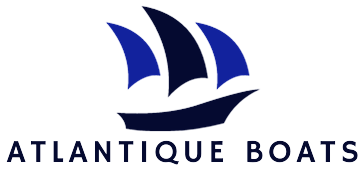Have you ever wondered what it’s called when a boat leans to one side? As a professional writer, I am here to unravel this intriguing nautical term for you. Picture yourself on a serene lake, the wind gently caressing your face, and suddenly, you feel a slight tilt to the side. This phenomenon, my friends, is known as “heeling.”
Heeling, in the world of boating, refers to the leaning or tilting of a boat to one side. It occurs when external forces such as wind or waves exert pressure on the sails or hull, causing the boat to tilt. This captivating term is not only fascinating to maritime enthusiasts but also plays a crucial role in understanding the dynamics and stability of a vessel. So, let’s dive deeper into the world of boating and explore the concept of heeling and its significance in English nautical terminology.
Understanding Boat Leaning: An Informative Guide
Boat leaning, also known as heeling, is a common phenomenon that occurs when a boat tilts or leans to one side. This can happen due to various factors, including wind, waves, weight distribution, and the design of the boat itself. Understanding why a boat leans and how to manage it is crucial for safe and enjoyable boating experiences. In this guide, we will explore the causes of boat leaning and provide step-by-step instructions on how to handle it effectively.
Causes of Boat Leaning
There are several reasons why a boat leans to one side. One of the primary factors is wind. When a boat is exposed to strong gusts of wind, it exerts pressure on the sails or hull, causing the boat to heel. The angle of the boat’s lean will depend on the wind force and direction. Additionally, waves can also contribute to boat leaning. As waves hit the side of the boat, they create an imbalance, leading to tilting.
Weight distribution is another significant factor in boat leaning. If the weight on one side of the boat is greater than the other, it can cause the boat to lean towards the heavier side. This can happen due to unevenly distributed cargo, passengers, or equipment. The design of the boat can also influence its tendency to lean. Some boats, such as sailboats, are designed to lean intentionally to harness the power of the wind, while others, like powerboats, are designed to minimize leaning for stability.
Managing Boat Leaning: Step-by-Step Instructions
1. Assess the wind and waves: Before setting sail, check the weather conditions to anticipate potential leaning. Be aware of the wind speed and direction, as well as the size and frequency of waves. This information will help you prepare and adjust your sailing strategy accordingly.
2. Adjust sail trim: If you’re sailing a boat with sails, proper sail trim is essential for managing boat leaning. Adjust the angle and tension of the sails to maintain balance. Generally, easing the sails slightly can reduce heeling, while tightening them can increase it. Experiment with different sail settings to find the most balanced position.
3. Shift weight: If your boat is leaning due to uneven weight distribution, shifting the weight can help restore balance. Move passengers, cargo, or equipment to the opposite side of the lean. Be cautious when redistributing weight, as sudden movements can further destabilize the boat. Communicate with your crew and ensure everyone understands the plan.
4. Use stabilizing equipment: Some boats come equipped with stabilizing devices, such as outriggers or ballasts, to counteract leaning. Consult your boat’s manual or seek professional advice on how to use these devices effectively. Adding additional weight to the low side of the boat can also help counterbalance the lean.
5. Adjust course and speed: Changing the boat’s course or reducing speed can sometimes alleviate boat leaning. Altering the direction at which the wind or waves hit the boat can reduce the force causing the lean. Slowing down can also reduce the impact of waves and wind, minimizing the boat’s tilt.
6. Seek professional guidance: If you’re unsure about how to manage boat leaning or encounter persistent leaning issues, consider consulting a professional boating instructor or expert. They can provide personalized advice based on your boat type, sailing conditions, and experience level.
By understanding the causes of boat leaning and implementing appropriate strategies, you can ensure a safer and more enjoyable boating experience. Remember to always prioritize safety and be mindful of changing conditions while on the water.
Frequently Asked Questions
Boating enthusiasts often have questions about various aspects of sailing and boat terminology. Below are some common questions related to the phenomenon of a boat leaning to one side, along with detailed answers.
Question 1: What is it called when a boat leans to one side?
Answer:
When a boat leans to one side, it is referred to as “heeling.” Heeling occurs when the wind pushes against the sails, creating a force that causes the boat to tilt or lean to one side. The boat’s center of gravity plays a vital role in determining the extent of heeling. Factors such as wind speed, boat design, and sail configuration also influence the degree of heeling.
Heeling is a natural and expected part of sailing, particularly when the wind is strong or the boat is maneuvering aggressively. Sailors use various techniques to manage and control heeling, such as adjusting the sails, shifting weight, or changing the boat’s course. Proper management of heeling is crucial to maintaining stability and ensuring a safe and enjoyable sailing experience.
Question 2: What causes a boat to lean to one side?
Answer:
Several factors can cause a boat to lean or heel to one side. The most significant factor is the force exerted by the wind on the boat’s sails. As the wind blows against the sails, it creates a force known as “heeling moment,” which pushes the boat sideways and causes it to tilt. The angle and intensity of this force depend on the wind speed, sail size, and the boat’s design.
Other factors that contribute to heeling include the boat’s weight distribution, the crew’s positioning, and the sea conditions. If the weight on board is unevenly distributed, such as having more weight on one side, it can cause the boat to heel excessively. Similarly, rough water or sudden gusts of wind can also increase the boat’s tendency to lean to one side. Sailors need to be aware of these factors and adjust accordingly to maintain balance and stability.
Question 3: Is heeling dangerous?
Answer:
Heeling itself is not inherently dangerous, as it is a normal part of sailing. However, excessive heeling can be risky if not properly managed. When a boat heels excessively, it can compromise stability, potentially leading to capsizing or other dangerous situations. Additionally, heeling can cause objects on board to shift or fall, creating hazards for the crew and passengers.
It is essential for sailors to understand the limits of their boat’s stability and to monitor heeling carefully. By employing appropriate techniques to control heeling, such as reefing the sails or adjusting weight distribution, sailors can maintain a safe and controlled sailing experience.
Question 4: Can heeling be controlled?
Answer:
Yes, heeling can be controlled to a certain extent. Sailors employ several techniques to manage and control heeling, depending on the wind conditions and the boat’s design. Adjusting the sails is one common method of controlling heeling. By reducing the sail area through reefing or furling, sailors can decrease the force exerted by the wind and reduce heeling.
Another way to control heeling is by shifting the weight distribution on board. Crew members can move to the opposite side of the boat to counterbalance the heeling force. This technique, known as “hiking out” or “leaning out,” helps to maintain stability and minimize the angle of heeling.
Question 5: How does heeling affect boat performance?
Answer:
Heeling can have both positive and negative effects on boat performance. In some cases, a moderate amount of heeling can actually enhance a boat’s performance by increasing its speed and maneuverability. By tilting to one side, the boat’s hull shape and keel design can generate lift, which allows for better upwind sailing and improved steering control.
However, excessive heeling can have adverse effects on boat performance. Excessive tilt can increase drag and slow down the boat, making it less efficient and more difficult to control. It can also make the boat less comfortable for the crew and passengers, affecting their overall sailing experience.
In conclusion, understanding the term for when a boat leans to one side is not only crucial for sailors and maritime enthusiasts, but also for anyone looking to broaden their knowledge of nautical terminology. This phenomenon, known as “heeling,” plays an essential role in the world of boating. Whether you are a seasoned sailor or a curious learner, knowing the correct terminology allows for effective communication and a deeper appreciation of the rich maritime tradition.
By exploring the concept of heeling, we gain insight into the intricate dynamics of sailing. This simple yet significant term encompasses the delicate balance between wind, water, and vessel. It encapsulates the essence of the sailing experience, where the forces of nature interact with the skill and expertise of the sailor. Understanding heeling not only equips us with the language to describe such a phenomenon but also enables us to appreciate the artistry and precision involved in navigating the open waters.
So, the next time you witness a boat gracefully tilt to one side, remember the term “heeling.” Embrace the knowledge and convey your understanding to others, as you become part of a community that values the beauty and complexity of sailing. Let us continue to explore the vast world of nautical terminology, keeping alive the spirit of adventure and discovery that has captivated sailors for centuries.

















